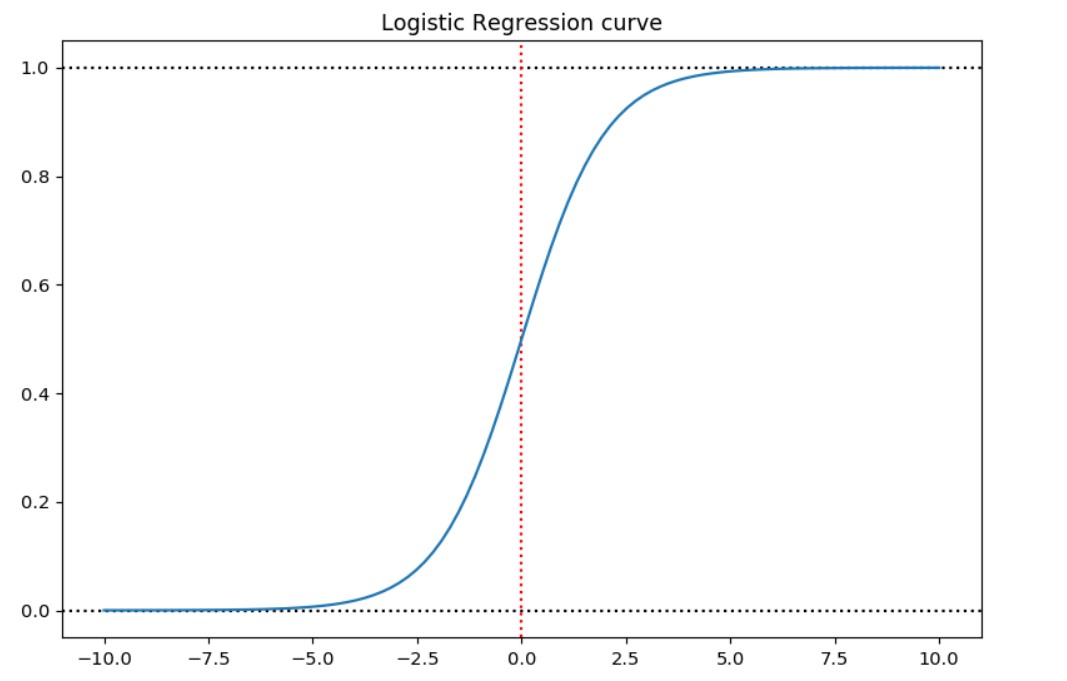How logistic regression works?
Sigmoid function inside
Let’s have a function:
$Sig(x)=\Large{\frac{e^x}{1 + e^{x}}}$
that looks like this:

It has values in between the range 0 and 1 for any input from -Inf, to Inf.
import numpy as np
from matplotlib import pyplot as plt
x=np.linspace(-10, 10, 100)
y = np.exp(x)/(1+np.exp(x))
fig,ax=plt.subplots(figsize=(9,6), dpi=105.3)
ax.axhline(0, color='black', linestyle=":")
ax.axhline(1, color='black', linestyle=":")
ax.axvline(0, color='red', linestyle=":")
ax.plot(x,y)
This is a sigmoid function used in Logistic Regression classification task.
If we have a default classification task, where we classify $Y$ (the outcome) to have values either 0 (No) and 1 (Yes) based on a sigmoid function.
If we predict $\hat Y > 0.5$, this means we predict the Yes answer, else we predicted No answer. The red dotted line is the separator.
We can use for probability notation $Pr(Y=1 \vert X=x)$ a short form $P(X)$.
So we can write:
$P(X) = \Large{\frac{e^{\beta_0+\beta_1X}}{1 + e^{\beta_0+\beta_1X}}}$
Logit trick
Having the form of sigmoid function allows us never to have problems with probability greater than 1 and lower than 0, but how can we get our betas back?
If we use the log odds transformation or logit transformation we get back the linear function: $\beta_0 + \beta_1X$.
$\beta_0 + \beta_1X = log(\frac{P(X)}{1-P(X)})$.
So this is our sigmoid driven model, but how can we estimate the parameters $\beta_0, \beta_1$?
We pick $\beta_0$ and $\beta_1$ to maximize the likelihood of the observed data.
$l(\beta_0, \beta_1)=\displaystyle \prod_{i:y_i=1} p(x_i)\prod_{i:y_i=0} (1-p(x_i))$
In 1922 R. A. Fisher introduced the method of maximum likelihood. He first presented the numerical procedure in 1912.
How to solve LogisticRegression programmatically?
In R you can use the glm function for this, because just a simple linear model works. In scikit-learn use LogisticRegression from sklearn.linear_model and play with the additional parameters.
Coefficient names
Coefficient $\beta_0$ is called the intercept, and $\beta_1$ is called the slope or balance. In scikit-learn these will be intercept_ and coef_ parameters.
Alternative names
Logistic regression is also called logit regression, maximum-entropy classification (MaxEnt) or the log-linear classifier.
…
tags: logistic regression - sigmoid function - logit function - classification task & category: machine-learning
